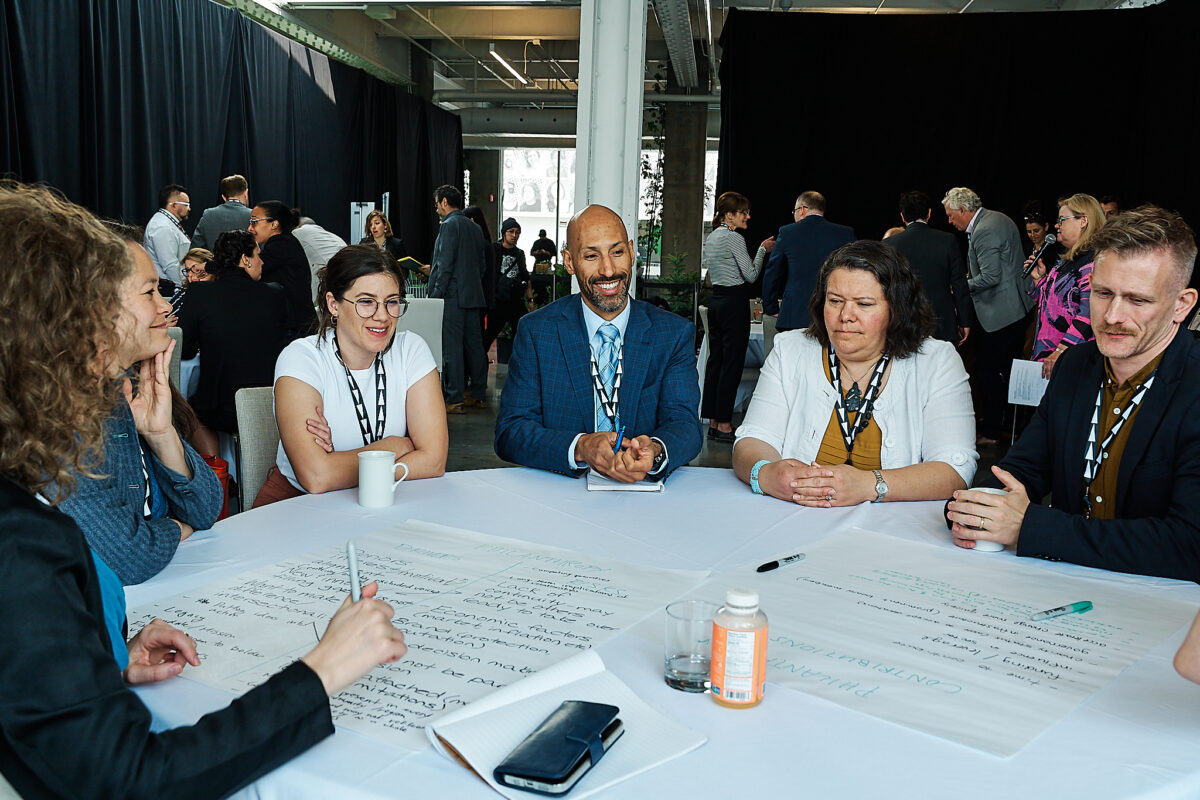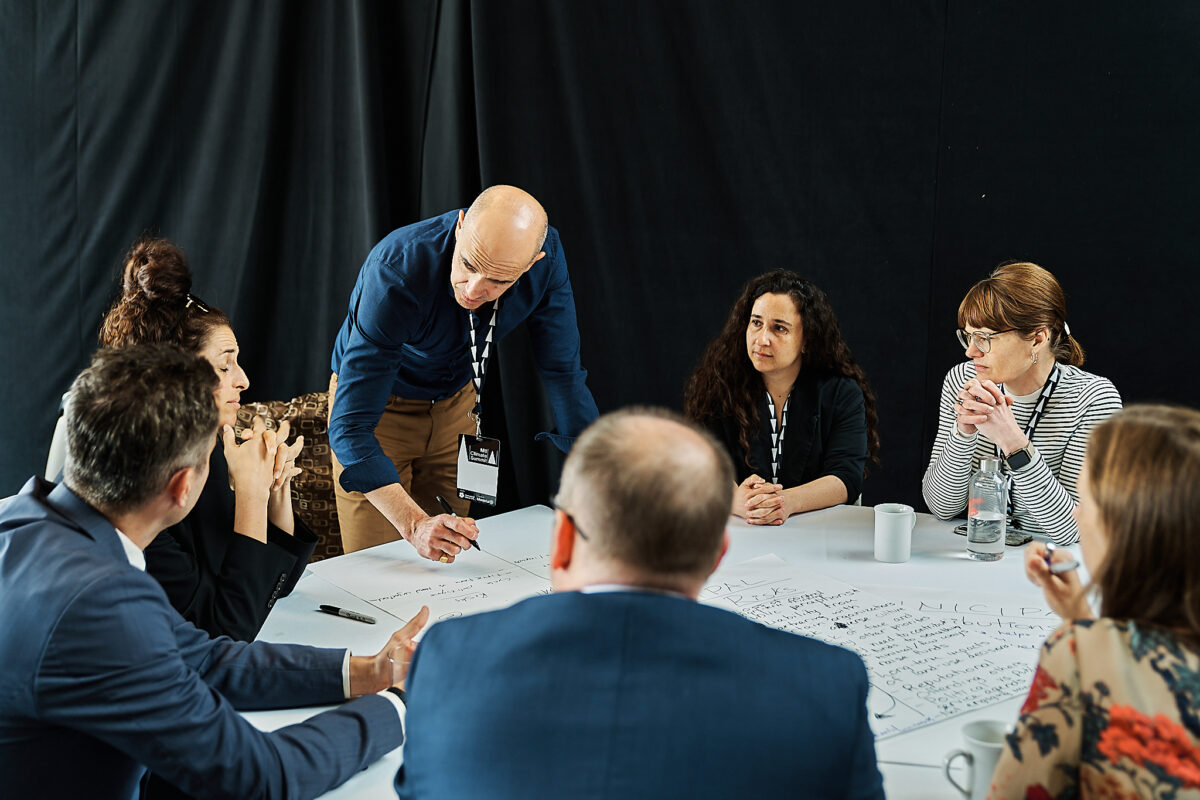July 12, 2023
Mary Pickering, Senior Advisor, LC3

As we gathered in Montreal to participate in the Montreal Climate Summit, collaboration was on our minds. Specifically, we were thinking about what it would take to align the work of philanthropic donors, municipalities and civic organizations to help shape and deliver transformative new carbon reduction strategies for cities.
Attending the Grand Quay of the Port of Montreal with the 900 Summit attendees, all taking advantage of the welcome opportunity to connect with one another in real life, certainly underscored the interest in working with one another on mutual goals. But the truth is, many of us have come to feel hesitant about initiating time-intensive collaborative work, especially given the urgency of climate change.
To tackle the subject, LC3 joined with ICLEI Canada and the Summit conference host, Partenariat Climat Montreal to host a session examining the needs, interests, and possibilities of collaboration given the current challenges we face in the climate sector.
With support from the Trottier Family Foundation and the Echo Foundation, we were able to invite municipal leaders from 11 Canadian cities to join us for the session, along with many philanthropic representatives from community, family foundation, government organizations, and civic leaders including our own LC3 Executive Directors and their community partners.
Common challenges and drivers, diverse contributions
Participants were asked to consider, from the perspective of philanthropic, municipal and civil society sectors, why they might want to partner, what concerns they may have, and what special assets they could offer. Putting themselves in the shoes of other players was revealing. We realized that every sector struggles with collaboration from the perspective of high transaction costs associated with group meetings, loss of control and autonomy (as power is shared among multiple players), dilution of brand, and reputational risk. They also struggle with conflicting systems, priorities, agendas and timetables. And while these concerns might play out differently within each sector’s specific context, they are often present for all parties.
On the flipside, they found common reasons driving the desire to explore collaboration. This includes interest in achieving greater reach and impact, building credibility and accessing resources such as expertise, knowledge, skills and networks. While we need to carefully consider why, how, and when to initiate a collaborative approach, there are some goals that simply can’t be achieved alone.

Another insight is that partners’ contributions are diverse and extremely valuable. While funding is often a driver for collaboration and clearly an important resource, other types of offerings like spheres of influence, specialist knowledge, capacity, access to supply chains, and even space to meet are also critical ingredients. Identifying and valuing these assets is a way to help build respect and appreciation for all of those participating in collaborative efforts.
The group took these reflections into a final session where they brainstormed ideas about the types of initiatives they considered to be well-suited to the collaborative approach. Five ideas emerged:
- Resilience hubs located in neighbourhoods and supported by community connection tools such as central information sites, teams of volunteers, or website groups could help communities be prepared for the impacts of extreme weather events and other climate impacts, such as power outages. Development of these initiatives was seen to be an opportunistic area of collaboration.
- Shared analyses was identified as a way to accelerate our understanding of key problems and solutions by working together to improve access to deep subject matter expertise and to ensure consistency in analysis among sectors.
- Designing and funding local climate action was inspired by the model of the Partenariat Climat Montreal itself, and participants expressed an interest in finding out more about the processes that help these types of initiatives succeed.
- Support for cross-sector and peer-to-peer engagement was seen to be an area of collaboration that could strengthen the capacity of existing groups, and to help ensure that activities are complementary and less competitive.
- Building better partnership process emerged as an area of collaboration to help ensure that before we launch into collaborations we gain input from diverse players, consider who is missing from the table, and expand the relationships and trust necessary to achieve sustained outcomes.
This workshop offered important insights to carry forward into the development of national collaborations among the seven LC3 Centres, and for the work local centres hope to build with and within their communities. It’s good to approach collaboration with our eyes wide open, both to ensure that we are purposeful in approaching and advancing collaboration that significantly improves our outcomes.
